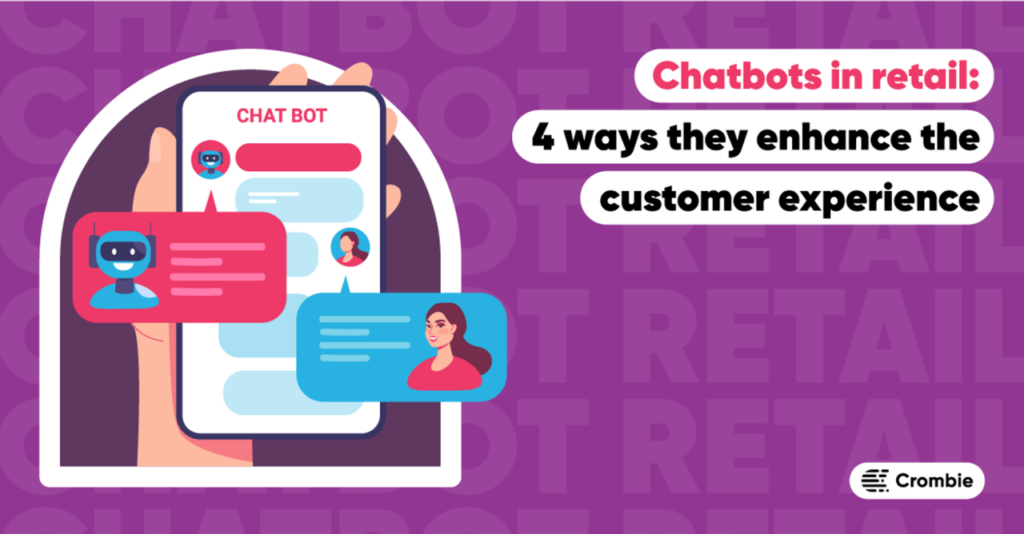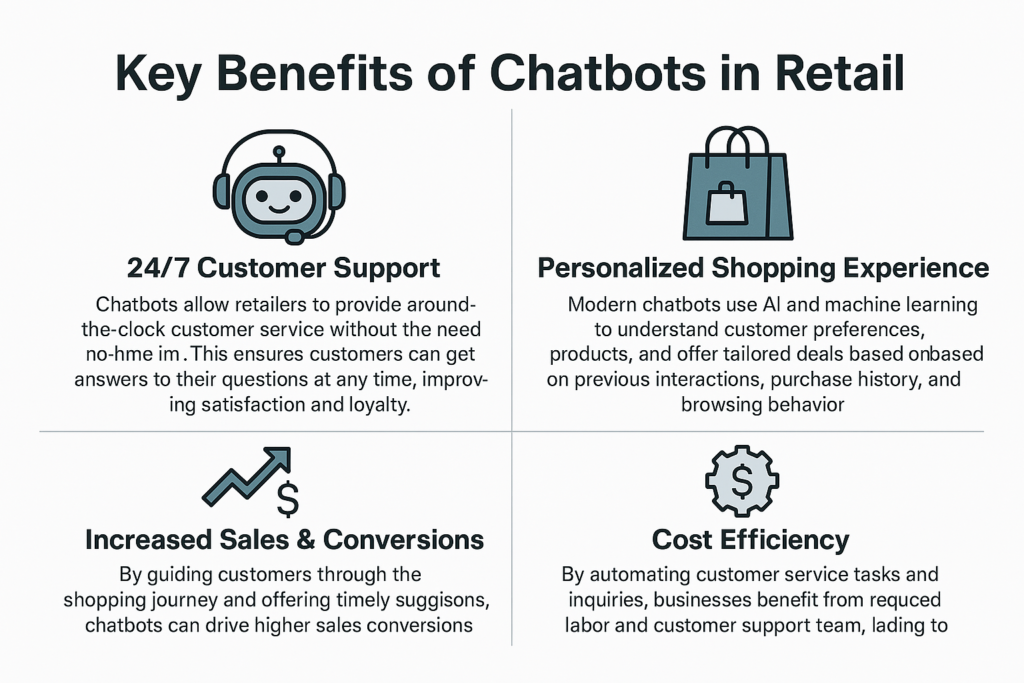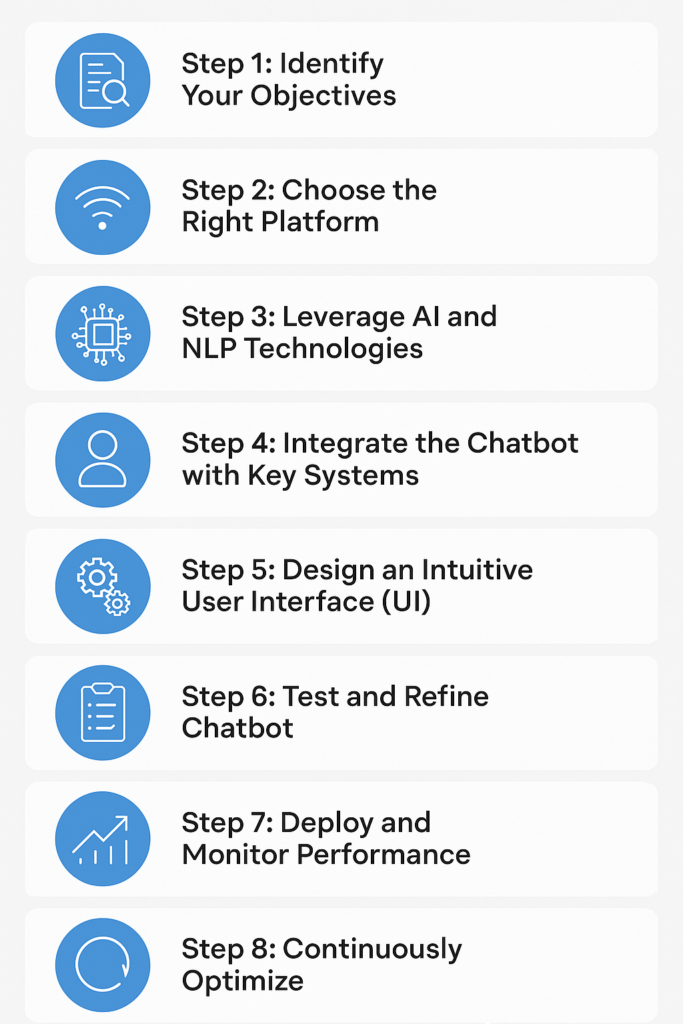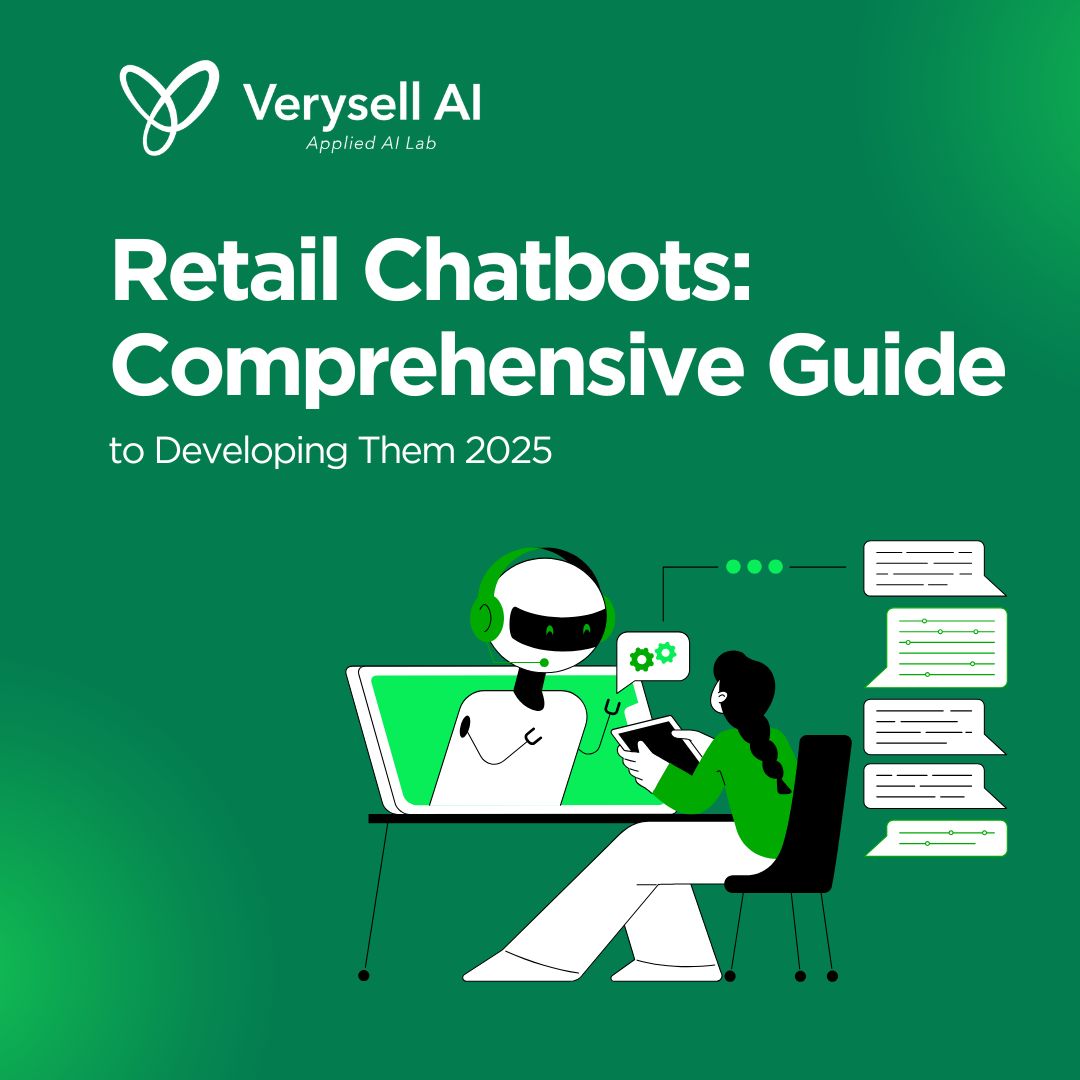Retail chatbots have emerged as powerful tools that significantly boost engagement, enhance conversions, and improve customer satisfaction in the retail sector. By leveraging artificial intelligence, these chatbots provide instant assistance to customers, guiding them through their shopping journeys and addressing inquiries in real-time. They can personalize interactions based on user preferences, recommend products, and streamline processes like order tracking and customer support. In this guide, we will delve into how retail chatbots operate, share valuable insights into their key benefits, explore best practices for effective implementation, and review case studies that highlight their success in transforming customer experiences.

Retail Chatbots: The Acceleration of Digital Transformation
The COVID-19 pandemic has played a major role in the last two years of retail management. One of the key trends has been the rapid shift to online platforms by consumers. Retailers had little choice but to extend their digital offerings at a rapidpace, combining the adoption of: click and collect services, online shopping, and home delivers.
Even at the beginning of the pandemic, online sales saw a dramatic increase, and by May 2020, online sales in the UK had risen to a record high of 34% of all retail sales (Khaliq, 2021). In the February before the first impact of COVID, online sales averaged around just only 20% of retail sales. So the rapid shift to improving online services was a clear priority for retailers prepared to increase engagement, build conversions, and improve customer satisfaction.
>> Read more: 5 Powerful Ways AI Chatbots in Retail Reduce Business Costs
A Better Customer Service
Providing an exceptional customer satisfaction has always been essential for gaining a competitive edge. With eCommerce consistently growing year after year and technology advancing rapidly, retailers must strive to keep pace with these changes. To remain relevant in consumers’ minds, they need to offer outstanding and memorable customer service. Additionally, it’s not just technological advances or the impact of the global pandemic driving this transformation in retail; consumers themselves have evolved. They are now more empowered, informed about their purchasing options, and willing to conduct thorough research on the products and services they consider.

The Modern Chatbot in a Retail Environment
Advancements in machine learning (ML) and artificial intelligence (AI), along with the rising popularity of messaging apps, have significantly shifted public perception of AI chatbots. Currently, about 70% of retail and eCommerce brands in the UK believe that AI, particularly in the form of virtual assistants, could have the most substantial impact on their industry (Aashind, 2024). Beyond chatbots, AI offers various solutions for retail, including enhancing supply chain efficiency, achieving cost savings, and providing more dynamic and agile pricing options.
However, to foster deeper and more meaningful relationships with customers, retailers are increasingly focusing on chatbots. These tools are being widely adopted across messaging platforms and are quickly becoming essential to both current and future customer service strategies. This surge in adoption is reflected in a remarkable 92% growth in the chatbot market over recent years, making chatbots the fastest-growing communication channel for brands (Todorov, 2024).
Key Benefits of Chatbots in Retail

24/7 Customer Support
AI Chatbots allow retailers to provide around-the-clock customer service without the need for human intervention. This ensures customers can get answers to their questions at any time, improving satisfaction and loyalty.
Personalized Shopping Experience (for Customer Satisfaction)
Modern chatbots use AI and machine learning to understand customer preferences, recommend products, and offer tailored deals based on previous interactions, purchase history, and browsing behavior.
Boost Engagement, Increase Sales and Conversions
By guiding customers through the shopping journey and offering timely support, chatbots can drive higher sales conversions. They can also streamline the checkout process, reducing cart abandonment rates.
Cost Efficiency
By automating customer service tasks and inquiries, businesses can reduce the need for a large customer support team, leading to significant cost savings.
Step-by-Step Guide to Developing a Retail Chatbot in 2025

Step 1: Identify Your Objectives
Before diving into the technicalities of chatbot development, it’s crucial to define the goals you want to achieve. Ask yourself some questions such as what are the primary tasks you want the chatbot to handle (e.g., customer support, sales assistance, product recommendations)?, do you want the bot to provide personalized shopping experiences or only answer FAQs?; and how will the chatbot integrate with your existing systems (e.g., CRM, inventory management, payment gateways)?
Step 2: Choose the Right Platform
Choosing the right platform is critical to the chatbot’s performance and functionality. Some popular options for retail businesses include:
- Messenger Platforms: Facebook Messenger, WhatsApp, and Instagram offer an easy way to integrate chatbots with social media channels.
- E-commerce Platforms: Shopify, Magento, WooCommerce, and other e-commerce platforms offer chatbot integration tools to streamline sales and support.
- Custom Solutions: If you require more flexibility, developing a custom chatbot for your website or app may be ideal, though this can be more resource-intensive.
Step 3: Leverage AI and NLP Technologies
To provide a truly engaging customer satisfaction, chatbots need to understand and interpret customer queries accurately. NLP allows chatbots to process human language and respond in a way that feels natural. Some AI tools to consider include:
- Dialogflow: A Google Cloud tool that provides powerful NLP and machine learning capabilities.
- IBM Watson Assistant: Known for its strong language capabilities and integration options with other retail systems.
- Microsoft Bot Framework: A flexible platform for building chatbots with AI and NLP features.
Step 4: Integrate the Chatbot with Key Systems
A chatbot’s ability to provide meaningful interactions largely depends on its integration with your business systems. For retail, this includes:
- Customer Relationship Management (CRM): Integrate the chatbot with your CRM to personalize conversations and recommend products based on past purchases.
- Inventory Systems: Ensure the chatbot can provide up-to-date information on product availability, sizes, colors, and other inventory details.
- Payment Gateways: Implement secure payment features to allow customers to complete purchases directly through the chatbot interface.
Step 5: Design an Intuitive User Interface (UI)
The success of a chatbot hinges on its ease of use. Retail customers expect a frictionless experience, so the UI should be simple, intuitive, and visually appealing. Consider the following:
- Quick Replies: Use buttons and carousels to provide pre-defined options, making it easier for users to navigate.
- Personalization: Use customer names, previous interactions, and preferences to create a personalized customer satisfaction.
- Multimedia Support: Include images, product descriptions, and even video tutorials to enhance conversions.
Step 6: Test and Refine Chatbot
Once the chatbot is developed, it’s time to test and refine it. Testing should be an ongoing process, ensuring that the bot continues to improve as it interacts with more customers. Key testing considerations include:
- Accuracy of Responses: Ensure that the chatbot can correctly understand and respond to a wide variety of queries.
- Context Handling: The bot should be able to handle contextual conversations, remembering previous interactions and adapting its responses accordingly.
- Bug Testing: Identify any errors or issues that could prevent smooth functionality, such as broken links, unresponsive buttons, or misinterpreted commands.
Step 7: Deploy and Monitor Performance
Once your AI chatbot is ready, it’s time to deploy it. However, the job doesn’t end here. Ongoing monitoring is crucial for ensuring optimal performance and identifying areas for improvement. Key metrics to track include:
- Boost Engagement: How often are customers interacting with the bot? Are they finding value in the conversation?
- Customer Satisfaction: Use feedback surveys and sentiment analysis to measure customer satisfaction.
- Enhance Conversions: How many customers are completing purchases or taking desired actions as a result of the chatbot interaction?
Step 8: Continuously Optimize
Even after launch, chatbots need continuous improvements to keep up with customer expectations and industry trends. Regularly update the bot with:
- New Product Information: Ensure the bot always provides the latest product information and promotions.
- Feedback: Act on customer feedback to enhance the bot’s accuracy and helpfulness.
- Feature Expansion: Add new capabilities, such as voice recognition, augmented reality try-ons, or automated returns handling.
Build Your Retail Chatbot With Verysell AI
At Verysell AI, we specialize in custom retail chatbot development powered by artificial intelligence and machine learning, designed to boost engagement for customers and optimize business operations. Our team provides comprehensive consulting and full-cycle development services, adaptable at any stage of your project. Focused on long-term collaboration, we ensure continuous innovation and scalability to meet your growing needs. Discover how our AI-driven solutions can elevate your retail business, contact Verysell AI today for more information.


